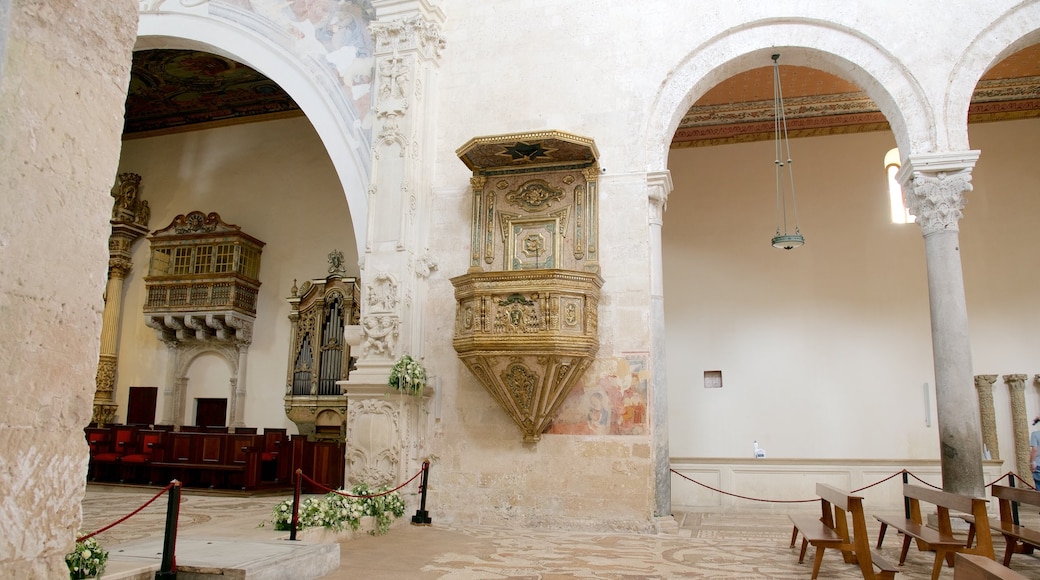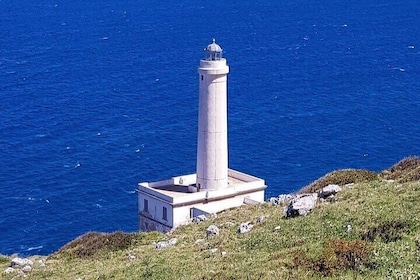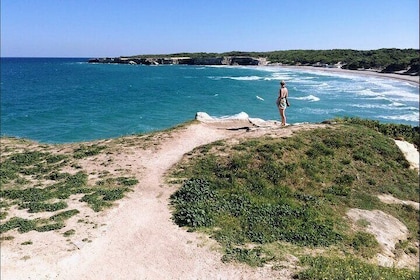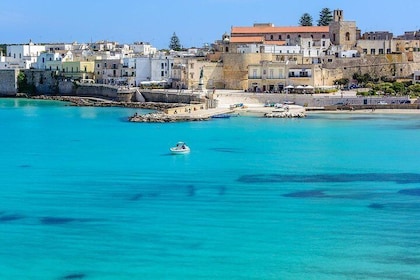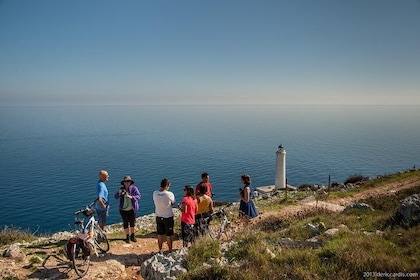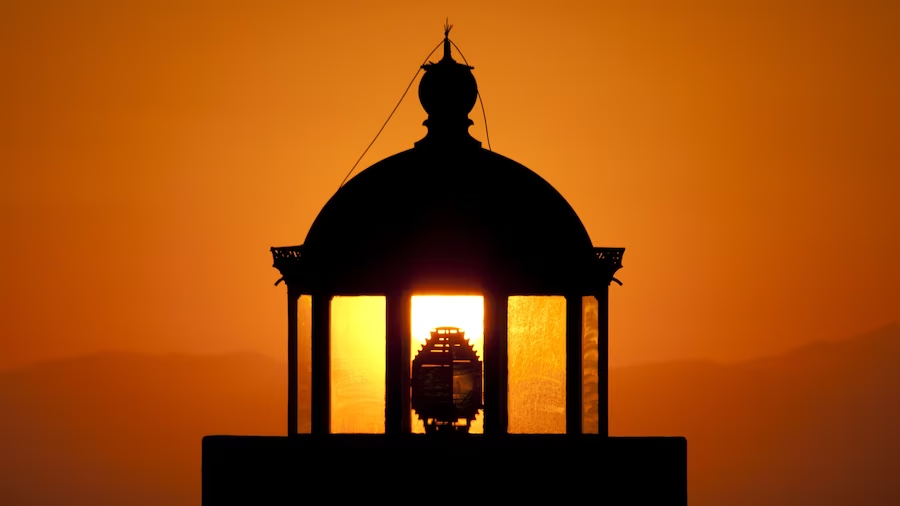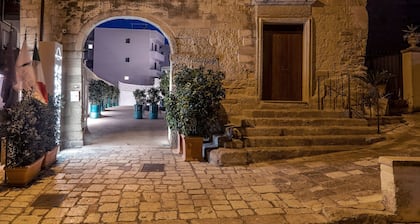Otranto Cathedral, once a stop on the pilgrimage to Jerusalem, is one of the most important landmarks in the town. Learn about the history of Otranto while admiring the church’s stunning architecture, historic artwork and moving burial sites. Most famously, its floor is decorated with a vast mosaic covered in mysterious images.
This Romanesque church was built in the 11th century on the remains of a Roman house. Since then, the cathedral has survived several sieges and attacks against Otranto, a town whose geographic location made it susceptible to invasion.
Before entering, take a moment to study the exterior. Although it is much more restrained than many cathedral façades, the exterior does include some elegant features, including a rose window and an entrance framed by a Baroque portal with Corinthian columns.
Enter the church to see the spectacular mosaic floor. Commissioned in 1163, this immaculately detailed artwork features imagery from different religions and traditions. Study the mosaic, which covers most of the church, to find pictures of Hercules and Alexander the Great alongside biblical figures such as Adam and Eve.
The giant mosaic has several strange images and words, which have inspired many visitors to try and decode its mysteries. Find mythical creatures on the tree of life in the nave and images in the apse of the struggle between Christ and the Devil.
Turn your gaze upward from the floor toward the wooden ceiling of the cathedral. Intricately painted octagons and crosses form a beautiful pattern that covers the entire nave.
Visit the Chapel of the Dead to see the bones of the Otranto martyrs. During the Sack of Otranto in 1480, over 800 locals were beheaded by the invading Ottomans when they refused to convert to Islam. The martyrs were canonized in 2013 for their act of faith.
Otranto Cathedral is open daily, although it often closes for a few hours around midday. Walk to the cathedral from the neighboring Otranto Castle, which is just 3 minutes away on foot.
